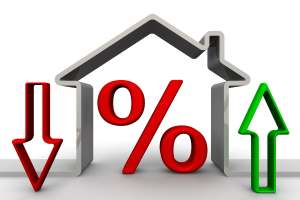
Is it Better to Refinance or Take Out a Second Mortgage?

Often time when speaking with my clients they are unsure as whether they should refinance or take out a second mortgage; in fact many times, I am asked just this one question: is it better to refinance or take out a second mortgage. The correct answer is that it really depends on your situation. There are times that refinancing is the right choice and then there are times when a second mortgage is a better solution.
To determine which option is right for your unique situation, we will begin by first exploring what refinancing and second mortgages are and what are the differences between the two. Next in order to determine whether it is more economical to have two mortgages with different interest rate or a single mortgage, we will learn about mortgage averaging so that you can understand what your true interest rate is when you have multiple mortgages each with a different interest rate. Understanding mortgage averaging is critical when trying to determine if you should refinance or take out a second mortgage.
What is Cash-Out Refinancing?
Mortgage refinancing should not be confused with renewing a mortgage. Refinancing a mortgage almost always involves changing some aspect of the mortgage, whether it is the term, rate, length or the amount borrowed or perhaps a combination of two or more. In the case of cash out refinancing, a homeowner opts to increase the amount borrowed.
With cash-out refinancing a homeowner uses the equity in his/her property to take out a new first mortgage that is larger than the existing first mortgage; in this way the homeowner pays off the existing mortgage and receives the balance in a lump-sum payment upon closing. For instance if a homeowner has a mortgage balance of $100,000 on a property that has a value $200,000 then the owner could refinance his/her mortgage and borrow $160,000. The proceeds would pay off the existing $100,000 mortgage and the homeowner would receive a check for $60,000 upon closing.
Benefits of Cash out Refinancing

The benefit of cash-out refinancing is that you can use the equity in your home to take out funds for whatever purpose you need it and you can select to amortize the mortgage over a long period to keep the payments low and repay the loan gradually over a long period. You still carry one single mortgage. If you happen to have good credit and your LTV is below 80%, you can receive very attractive interest rate from an “A lender”.
What is a Second Mortgage?
The Second Mortgage also known as home equity loan is when a homeowner already has a first mortgage but chooses to use his/her equity to take out a new mortgage apart from the first mortgage; this is then called a second mortgage. Since the second mortgage is completely separate from the first, it means the homeowner does not have to make any modification to the existing first mortgage.
Benefits of a Second Mortgage
The benefit of getting a second mortgage is that it can be arranged without the need to modify the existing first mortgage. It can be arranged rather quickly so it is a good option for payout emergency bills. The second mortgage can go as high as 95% LTV for some properties. Homeowners with bad credit and low income can be approved quickly. The amount borrowed depends on the amount of equity so homeowners with sufficient equity could borrow a large sum regardless of their income or credit.
Difference between Refinance and Second Mortgage
With refinancing, the homeowner still has one mortgage and one single payment to the same lender whereas with second mortgage, the borrower will have two mortgages and two separate payments to potentially two different lenders.
The refinance can be amortized for very long period such as 25 or 30 years which will give the homeowner sufficient time to pay off the mortgage slowly. Second mortgages have shorter period and are generally need to be repaid within one or year from their origination date; although some lenders offer to renew the second mortgage upon renewal, there is usually a fee associated with the renewal
Second mortgages have higher interest rates than first mortgages since they are registered second on the title and pose a greater risk to the lender. Cash-out refinancing can offer the borrower very low rates if the borrower has good credit and borrowed amount is within the institutional limit (currently 80% LTV)
Cash out refinancing if done through an institutional lender can only go up to 80% loan to value ratio whereas second mortgages through private lender can go as high as 95% LTV.
If the cash-out refinancing is through an institutional lender, then the qualification depends on the borrower’s credit history, debt ratio as well as the property itself. Whereas with second mortgages, the borrower can receive qualification based upon the equity in the property
Mortgage Averaging is the Key to Selecting the Right Option

How can you really determine what is more economical: having a single mortgage at a slightly higher interest rate or two mortgages, one with very low interest rate and another with very high interest rate. Often time homeowner believe that it is more economical to have one single mortgage at a slightly higher interest rate than getting a second mortgage at a high interest rate; however, you may be surprised to learn that this is not always the case and in some instances it is much more efficient financially to get a second mortgage albeit at high interest rate.
The Key to determining what option to choose is calculating the mortgage average for all your mortgages and interest rates. The mortgage average is achieved through the following formula
Let’s apply the mortgage averaging for the below scenario. Let say a homeowner has an existing first mortgage of $300,000 at 3% interest rate and needs to borrow $30,000 to pay off credit card debts and perform some renovations. The homeowner is contemplating which option to choose: refinance the first mortgage for $330,000 at 4% interest rate or take out a $30,000 second mortgage at 12% interest rate. At first glance such a high interest rate for a second mortgage may influence anyone to turn away from it but a close investigation will prove otherwise
Existing 1st Mortgage of $300,000 at 3% Interest Rate. Need to Borrow Additional $30,000
Which of the below options provides the best rate?
To determine which option is best, we apply the mortgage averaging formula for the second option to find out what the total interest rate is:
Therefore we can see that taking out a second mortgage in the above scenario is the better option as the average interest rate 3.82% is lower than refinancing at 4%. Check out our Mortgage Averaging calculator also referred to as Weighted Interest Rate Calculator to simplify and speed up your calculation.
Other Costs Must Also be considered
Mortgage averaging is an effective tool in determining true interest rate on multiple mortgages and is useful when comparing rates with other mortgages. However, there are other costs that must be taken into account when comparing mortgage options and lenders. These fees may include legal costs, origination fees, appraisal, etc. Be sure to pay attention to all these costs to find out what is your total cost of borrowing. If you are working with a mortgage agent, your agent is mandated by the province of Ontario to disclose all fees and costs associated with borrowing so be sure that you are provided with these information before proceeding with a loan



